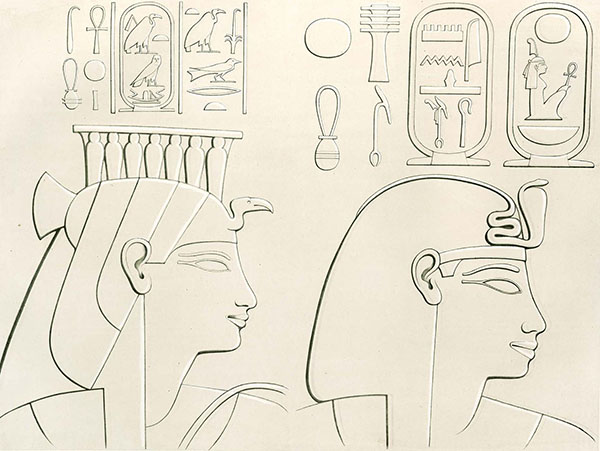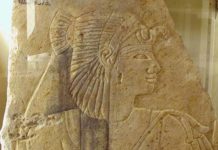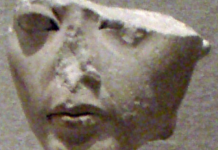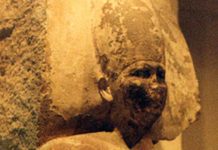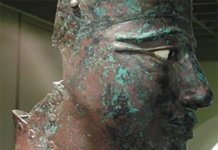The lesser wife of Tuthmosis IV acted as a Regent for their son Amenhotep III, and received an honorary position and divine status during his reign.
The origins of Mutemwiya – Tutankhamun’s double great-grandmother are unclear, and some have proposed that she was a foreign princess, but it has been established that she was an Egyptian lady. Her name which means Mut is in her Barge is associated with Mut – the ancient Egyptian mother goddess, who was a popular deity in the region of Akhmin in Upper Egypt. However, there is no evidence to prove that she was from the area.
Mutemwiya at the Court of Amenhotep II
The reign of Amenhotep II (c.1423-1397 BC) was a glorious age in the 18th Dynasty. The king, who boasted an impressive lineage was an athletic and ruthless warrior who consolidated Egypt’s borders and secured his dominance over Syria. His wife and queen was Tiaa – a high-ranking priestess of Amun at the Karnak Temple Complex, and they reigned together from Memphis – Egypt’s traditional capital, and from the court at Thebes.
Amenhotep and Tiaa had a teenage son named Tuthmosis, who was a secondary son and he was not expected to succeed, but he was declared heir-apparent after the Great Sphinx at Giza spoke to him in a dream. The Sphinx foretold of his accession on condition that he restore the ancient monument back to its former glory. The young Tuthmosis did so and sure enough his elder brother died.
Tuthmosis took Mutemwiya as his wife around Year 20 of Amenhotep II’s reign (c.1403 BC), but her position would always be lower-ranking at the palace. At the head of the female hierarchy was her mother-in-law – Queen Tiaa, and in second place was Tuthmosis’ chief-consort– Nefertari, who is believed to have been a commoner.
Mutemwiya was always third-place at court. However, the young queen may have felt somewhat more respectable when she gave birth to a son during Year 24 of her father-in-law’s reign. Prince Amenhotep – who later became King Amenhotep III was born c.1399 BC. He was named in honour of his grandfather –whose name means Amun is content, but he was not the designated heir.
The Wives of King Tuthmosis IV
Pharaoh Amenhotep II ruled for twenty-seven years and died a middle-aged man around 1397 BC, and Tuthmosis succeeded at the age of twenty. His widow Queen Tiaa became the most powerful woman in Egypt, she frequently appeared with her son and was given the honorary title of Great Royal Wife – which she had never held during her husband’s lifetime, instead it had been held by his mother, Queen Merytre-Hatshepsut.
Nefertari was Tuthmosis’ first chief-consort, and it appears that she was given the title of Great Royal Wife during his reign. Mutemwiya received no such status and the harem must have been the scene of many intrigues, it would only be a matter of time before Tuthmosis espoused his younger sister – the Princess Iaret – who would at some point be given the same title, ensuring that Mutemwiya would remain in the same position.
The Children of Tuthmosis IV
Among the royal sons were Amenemhat – the designated heir, Amenhotep, Aakheperure and Siatum, and the princesses included Amenemipet, Petepihu, Tiaa and Tentamun. It seems logical that Nefertari may have been the mother of Amenemhat – but this as not been proven. It is unclear which children were born to Mutemwiya – apart from Amenhotep.
The Childhood of Amenhotep III
During the reign of his father Amenhotep would have spent his childhood with his siblings at the royal estate at Gurob – under their guardians and tutors, Like his mother, Amenhotep was a lower-ranking prince, but the events of Year 7 of his father’s reign (c.1390 BC) were to drastically alter their positions at court, when the young Amenemhat died unexpectedly, and Amenhotep was declared the heir-apparent at the age of eight years old.


